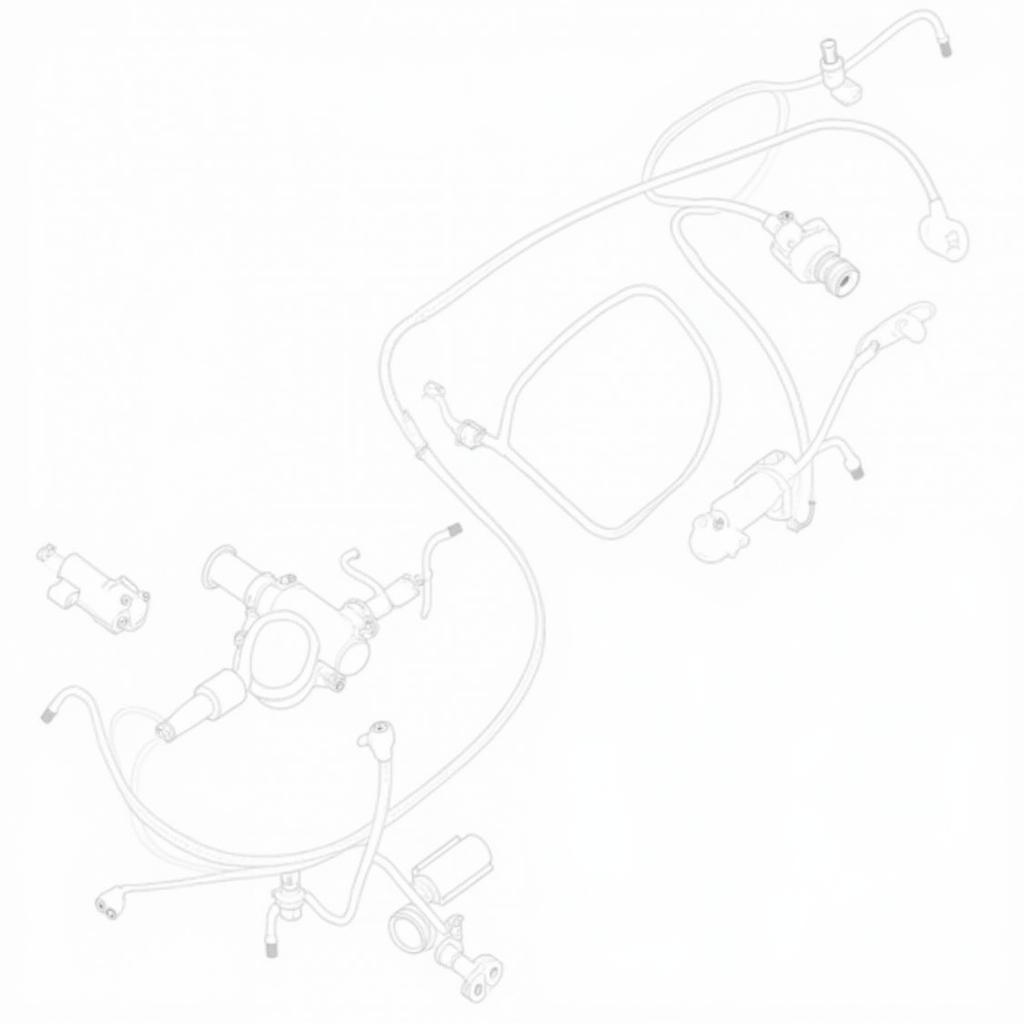The OBD2 code P0499 can be a real head-scratcher for car owners. This code, indicating an issue with your vehicle’s Evaporative Emission Control System (EVAP), can be triggered for various reasons, making it tricky to pinpoint the exact culprit without a deeper understanding. In this comprehensive guide, we’ll demystify the P0499 code, exploring its potential causes, symptoms, diagnostic procedures, and solutions, empowering you to tackle this car trouble with confidence.
What Does the OBD2 Code P0499 Mean?
Before we delve into the intricacies of the P0499 code, let’s first grasp the fundamentals of the EVAP system. This crucial component plays a vital role in reducing your car’s environmental impact by preventing harmful fuel vapors from escaping into the atmosphere.
Think of the EVAP system as a closed loop, capturing fuel vapors from the gas tank and routing them to the engine for combustion. The P0499 code, specifically, signals a problem with the EVAP system’s purge control solenoid circuit, hinting at a potential electrical fault or a malfunctioning solenoid.
Common Causes of OBD2 Code P0499
Understanding the potential causes of the P0499 code is crucial for effective diagnosis and repair. Here are some common culprits:
-
Faulty Purge Control Solenoid: The purge control solenoid, responsible for regulating the flow of fuel vapors into the engine, can become stuck open or closed, disrupting the system’s delicate balance.
-
Wiring Issues: Damaged, corroded, or disconnected wiring within the purge control solenoid circuit can disrupt the electrical signals, leading to a P0499 code.
-
Vacuum Leaks: A leak in the EVAP system, particularly in the hoses or connections near the purge solenoid, can disrupt the pressure balance and trigger the code.
-
Malfunctioning Vent Control Valve: While less common, a faulty vent control valve, which regulates the flow of air into the charcoal canister, can also contribute to a P0499 code.
-
ECM Issues: In rare cases, a problem with the Engine Control Module (ECM), the brain of your car’s engine management system, can cause erroneous signals to the EVAP system, triggering the code.
Recognizing the Symptoms of a P0499 Code
While the check engine light illuminating on your dashboard is the most obvious sign of a P0499 code, other symptoms might surface, signaling a problem with your EVAP system:
-
Fuel Smell: A strong fuel odor, particularly after refueling or during engine startup, can indicate a leak in the EVAP system, allowing fuel vapors to escape.
-
Rough Idle: A malfunctioning EVAP system can disrupt the air-fuel mixture entering the engine, leading to a rough or erratic idle.
-
Decreased Fuel Economy: When the EVAP system isn’t functioning correctly, fuel vapors might not be properly purged and burned, potentially impacting your car’s fuel efficiency.
Diagnosing and Fixing the OBD2 Code P0499
Before attempting any repairs, it’s crucial to accurately diagnose the root cause of the P0499 code. Here’s a step-by-step approach:
- Retrieve OBD2 Codes: Begin by using an OBD2 scanner to retrieve the stored trouble codes. This will confirm the presence of the P0499 code and rule out other potential issues.
-
Inspect the Purge Control Solenoid: Locate the purge control solenoid, usually mounted on the engine or firewall, and visually inspect it for any signs of damage, corrosion, or loose connections.
-
Test the Purge Control Solenoid: With the engine off, disconnect the electrical connector from the solenoid and use a multimeter to check for continuity across the solenoid’s terminals. A lack of continuity indicates a faulty solenoid.
-
Check for Vacuum Leaks: Inspect the vacuum hoses connected to the purge solenoid and other EVAP components for cracks, loose clamps, or signs of deterioration. A hissing sound when the engine is running can also indicate a vacuum leak.
-
Inspect the Vent Control Valve: Similar to the purge solenoid, inspect the vent control valve for damage, debris, or signs of malfunction.
-
Consult a Professional: If the issue persists after performing these checks, it’s best to consult a qualified mechanic for further diagnosis and repair, as the problem might lie within the ECM or require specialized tools.
Conclusion
Addressing the OBD2 code P0499 promptly is crucial for ensuring your vehicle’s optimal performance, fuel efficiency, and environmental responsibility. By understanding the code’s meaning, common causes, and diagnostic procedures outlined in this guide, you’ll be well-equipped to tackle this car trouble head-on, either through DIY repairs or by seeking professional assistance.


